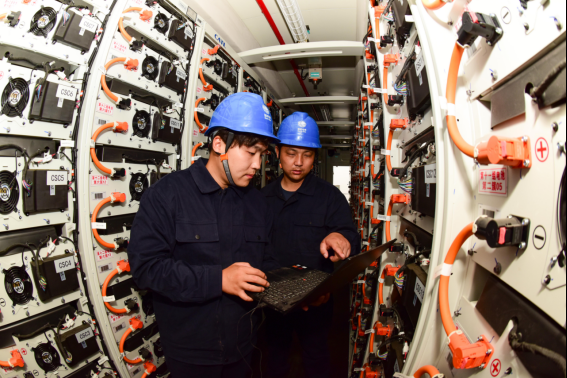As renewable energy continues to grow rapidly,
energy storage systems are becoming an essential part of modern power systems. Proper commissioning and maintenance are critical to ensure these systems operate safely, reliably, and efficiently. Here's a detailed guide to the key processes involved in commissioning and maintaining energy storage systems.
Commissioning Process
1. Equipment Inspection
Check the equipment's exterior for any damage, such as dents, deformations, or signs of corrosion.
Make sure all connections, including power cables and communication links, are secure and free from any loose or faulty contacts.
Verify that system parameters like voltage levels, capacity, and charge/discharge rates are set correctly.
2. System Testing
Perform insulation tests to check for any electrical leakage risks.
Conduct voltage withstand tests to ensure the system can handle high-voltage conditions.
Test the system's charge and discharge functions to confirm they're working as expected, including efficiency and depth of discharge.
3. Functional Testing
Test the system's control functions to ensure it follows the charge/discharge logic and can automate operations based on preset conditions.
Confirm that all protective features, such as overvoltage, overcurrent, and short-circuit protection, are functioning properly.
Check the system's communication capabilities to ensure it can reliably transmit data to the monitoring system.
4. System Integration Testing
Connect the energy storage system to the grid or other equipment to test its ability to operate in coordination with them.
Fine-tune system settings based on actual performance to optimize its functionality.
Maintenance Process
1. Routine Inspections
Monitor key operational parameters like voltage, current, and temperature to ensure they're within normal ranges.
Inspect the equipment for visible damage, unusual heat, strange odors, or other signs of malfunction.
Verify that all connections are secure and cables are intact with no signs of wear or damage.
Ensure fire safety equipment, such as fire extinguishers and alarm systems, is in good working condition and within its service period.
Frequency: Daily.
2. Regular Maintenance
Clean the equipment to prevent dust and debris from affecting performance.
Carry out scheduled tasks such as battery replacements, connection tightening, and general upkeep.
Periodically recalibrate the system to maintain accurate readings and reliable performance.
Perform maintenance on fire safety systems, such as replacing extinguishers and inspecting fire pipelines.
Frequency: Monthly.
3. Fault Management
Diagnosing Issues: Use monitoring systems, alarms, and equipment status checks to pinpoint the cause of faults.
Repairing Problems: Replace defective components, adjust system settings, or involve professional technicians for more complex issues.
Post-Repair Testing: After repairs, test the system thoroughly to confirm it's back to normal. This includes verifying charge/discharge performance, protection functions, and communication capabilities.
4. Data Analysis
Collect Data: Regularly gather key operational data, such as voltage, current, temperature, and charge/discharge statistics.
Analyze Trends: Review the data to identify potential issues like battery degradation or system inefficiencies.
Implement Improvements: Use insights from the analysis to propose optimizations, such as adjusting charge/discharge strategies or fine-tuning system parameters.
Skills for Maintenance Personnel
To ensure effective maintenance, personnel should have the following skills:
1. Electrical Knowledge: Strong understanding of circuits and electrical equipment, with the ability to diagnose faults and follow safety regulations.
2. Battery Expertise: Familiarity with the characteristics and performance of different types of batteries, along with the ability to identify and fix battery-related issues.
3. Automation and Controls: Understanding of automation principles, including sensors and controllers, and proficiency in programming and debugging.
4. Mechanical Skills: Knowledge of the mechanical structure and operation of energy storage equipment, as well as the ability to diagnose mechanical faults and use common tools.
5. Problem-Solving: Ability to quickly identify fault points and implement effective solutions, especially in urgent situations.
Proper commissioning and regular maintenance are the foundation of a safe, reliable, and efficient energy storage system. By following a thorough and well-structured process, you can maximize performance and ensure long-term reliability.
